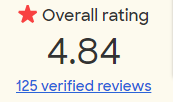Bunion Treatment / Surgery
A bunion (Hallux Valgus) is a common foot ailment that can be treated by Board Certified Podiatrist, David P. Rosenzweig, DPM.
A bunion is tender enlargement of the foot that develops inside of the big toe. A bunion can result from abnormal bone formation in the first metatarsalphalangeal joint (1st toe or “big toe”) and misalignment of the first toe. A bunion can be a result of inflammation or to a degenerative disease (e.g., osteoarthritis).
Symptoms of a bunion occur when wearing shoes that crowd the toes — shoes with a tight toe box and / or high heeled shoes. This may explain why women are more likely to develop a bunion than men. Additionally, spending long periods of time on your feet can aggravate the symptoms of a bunion.
Symptoms, which occur at the site of the bunion, may include:
- Pain over the joint, aggravated by pressure from shoes or activity
- Big toe turned toward the other toes
- Red, inflamed, or calloused skin along the foot at the base of the big toe
- A bony bump
- Pain or soreness of the foot or toe(s)
- A burning sensation of the foot or toe(s)
- Numbness
Other conditions that may appear with bunions include: hammertoes, taylor’s bunion, calluses, sores between the toes, ingrown toenails, and restricted motion the toe.
It is time to see a foot doctor / podiatrist if your bunion:
- Continues to hurt after self care, such as wearing wide-toed shoes
- Prevents you from doing your usual activities
- Has any signs of infection (like redness or swelling), especially if you have diabetes
Bunion Treatment Options
Your bunion treatment options differ depending on the severity of pain and deformity. Left untreated, bunions have the tendency to get larger and usually more painful.

Early Bunion Treatment
- The objective of early bunion treatment is to alleviate pressure on the bunion and lesser toes, and to diminish the progression of joint deformities.
- Padding the bunion is an important initial step, as is wearing shoes that are large enough to comfortably accommodate the bunion.
- Medications, such as nonsteroidal anti-inflammatory drugs or cortisone injections, may be prescribed by the podiatrist to ease the pain and inflammation.
- Physical therapy, ultrasound treatment, or other techniques may also provide temporary relief.
- Shoe inserts (orthotics) may be useful in controlling abnormal foot function and may reduce symptoms for those with a painful bunion that has not yet caused a significant bony abnormality at the joint.
Surgical Bunion Treatment
- When non-invasive bunion treatment does not provide relief from painful symptoms, or when the condition interferes with your activities, surgery may be necessary.
- Pain and deformity are significantly lessened in patients who elect bunion surgery. In addition to easing pain, the purpose of bunion surgery is to remove the enlargement and realign the joint to restore normal function. This means that after bunion surgery, the foot can carry the body’s weight properly, and that special shoes are no longer needed.
- Depending on the procedure, the facility at which it is performed and the patient’s medical status, the surgeon may choose a local, spinal or general anesthetic. In many cases, the procedure can be performed under local anesthesia.
Most bunion surgery is performed in our office surgical suite or local hospital on an ambulatory basis under twilight-type anesthesia. The procedure most commonly is performed in fewer than 40 minutes with a surgical re-alignment (osteotomy) with titanium screw fixation. There is little discomfort or disability with our newer state-of-the-art techniques. Most patients return to athletic shoes within 3 weeks. Rarely are a cast or crutches required with this technique.
Advanced Footcare Center
90 South Ridge Street
Rye Brook, New York 10573
T: (914) 937-7077
E: info@footdoctorcenters.com

